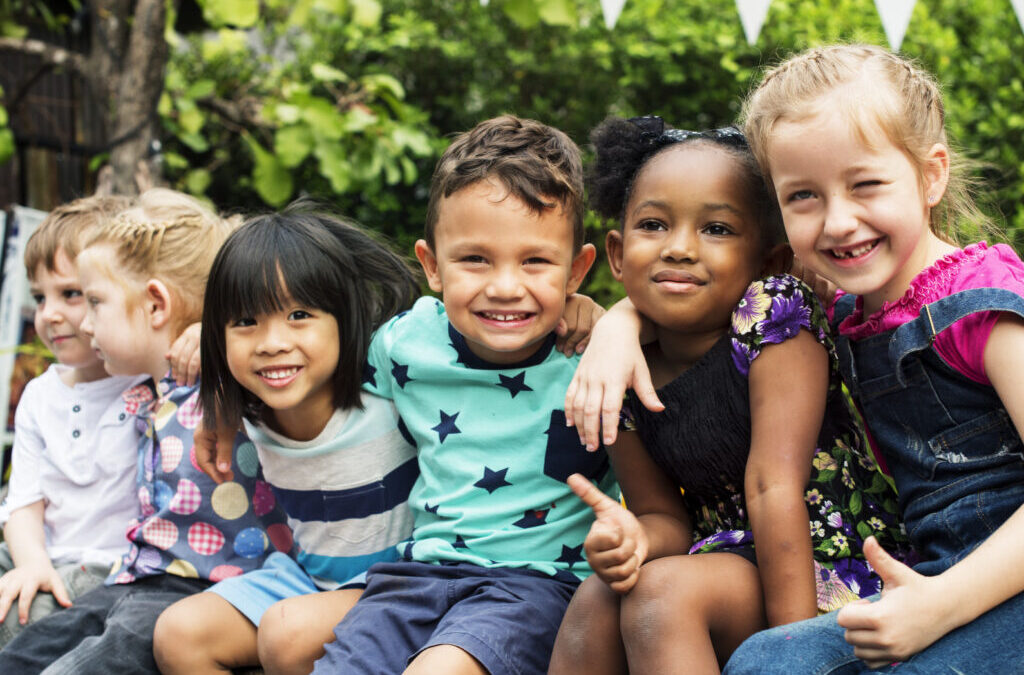A new year is often a time of growth, resilience, and joy as children embark on new adventures in settings or groups. It’s a time for developing relationships and connections, uncovering each child’s unique personality, and setting expectations. We have begun to create a haven of safety and stability, where children feel a sense of belonging and are ready to play and learn, however, a new year calendar after all the festivities, celebrations, and events, can still stir excitement, requiring resilience and stamina in both children and adults alike.
This time is filled with much energy and excitement: calm and steady children transform into “bottles of pop,” brimming with emotion. Those routines that create a safe and positive learning climate are tested as heightened joy threatens to spill over into dysregulation. Understanding and navigating this energetic shift is essential for fostering growth and maintaining a balanced emotional learning environment.
The science of joy
Joy is a core emotion alongside anger, fear, and sadness, and it plays a critical role in our wellbeing. Yet it is not an emotion we explore so much. The body releases a cocktail of chemicals during joyful experiences, creating optimal conditions for learning. These include:
- Oxytocin and Opioids: Enhancing feelings of love, trust, and connectedness while reducing loneliness, fear, and anger. Oxytocin also buffers the effects of the stress chemical cortisol.
- Dopamine: Boosting focus, motivation, and pleasure, reinforcing positive behaviors.
- BDNF (Brain-Derived Neurotrophic Factor): Often referred to as ‘brain fertilizer’, it supports neuron growth and strengthens synaptic connections, particularly during physical play and belly laughter.
Joy activates the brain’s reward pathways, motivating us to repeat experiences that promote happiness…which is great news for learning! However, the accumulative effect of these ‘feel-good’ chemicals, combined with adrenaline, can lead to over-arousal and potentially dysregulation. While some children can self-regulate, others may struggle, leading to what Dan Siegel refers to as ‘flipping the lid’, where the brain shifts into survival mode (fight, flight, freeze), bypassing any rational thought.
Supporting children through the heights of joy
Recognizing and managing the impact of joy is crucial for us as educators and caregivers. It’s not uncommon to hear that some children ‘can’t handle’ exciting events. However, rather than withdrawing opportunities for joy, it’s vital to teach children how to navigate these powerful emotions and make sense of these big feelings. This social and emotional learning is key to their development.
Top Tips:
1. Be an emotionally available adult
- (Playfulness, Acceptance, Curiosity, Empathy) to co-regulate with children.
- Validate the feelings underlying behaviors before addressing the actions themselves. For example, acknowledge a child’s excitement or frustration without dismissing their experience.
2. Structured environments
- Maintain predictable routines to provide a sense of security. Be mindful of how changes in structure, both at school and home, can affect children.
3. Visual prompts
- Incorporate emotion cards or visual aids to help children identify and understand their feelings. These tools offer a tangible way to connect emotions to their experiences.
4. Play and role modeling
- Encourage play as a method for practicing regulation and problem-solving. Demonstrate a calm presence and model self-regulation skills.
5. Positive reinforcement
- Recognize and celebrate moments when children successfully self-regulate after a joyful experience. This reinforces these desirable behaviors and builds confidence.
6. Mindfulness practice
- Introduce activities that calm the nervous system, such as simple yoga exercises, body scans, or outdoor observation. These practices help children ground themselves and manage over-arousal and potential dysregulation.
Cultivate your child’s healthy habits
Lots of sleep, exercise, and a healthy diet are important to everyone’s well-being, especially children’s. For exercise, your child doesn’t have to be on a soccer team: Just running around outside helps children with their moods.
You might also want to pay attention to any connection between your child’s mood and particular foods. Some parents find that while sugar can give their child an energy boost, it can also create energy slumps when the effect of the sugar wears off. Food allergies and sensitivities may also play a role in your child’s behavior and mood.
Let your child figure it out
Sometimes parents think creating a happy child means swooping in to make everything better whenever life throws a curveball. But Carrie Masia-Warner, a child psychologist and associate director of the Anxiety and Mood Disorders Institute at the New York University School of Medicine, sees this as a big mistake many loving, well-intentioned parents make.

